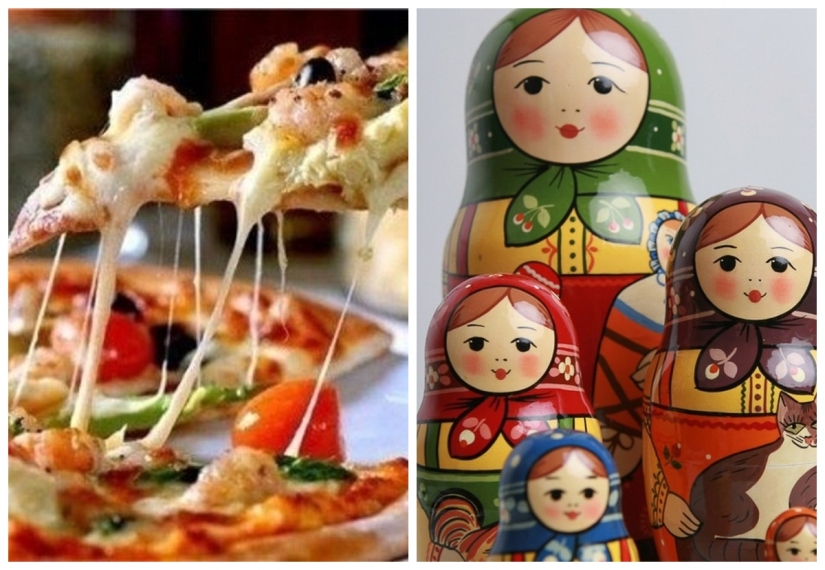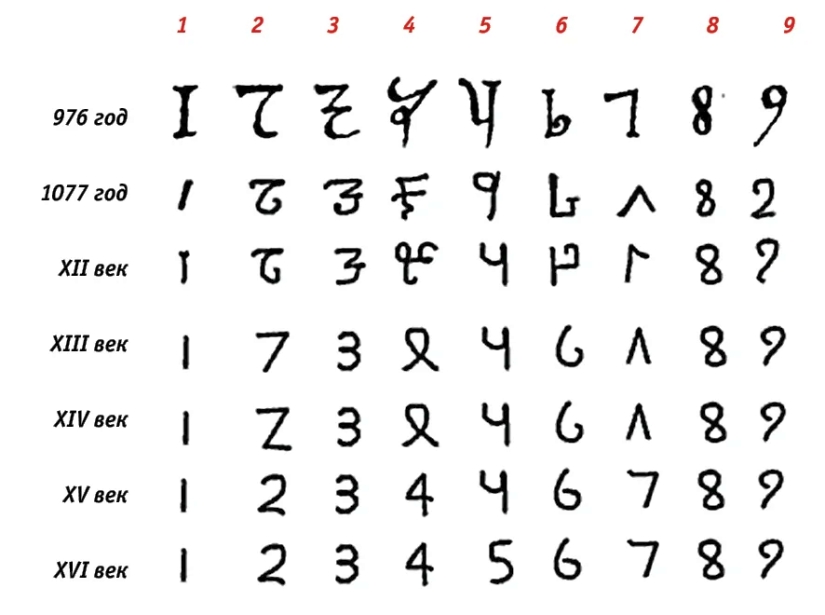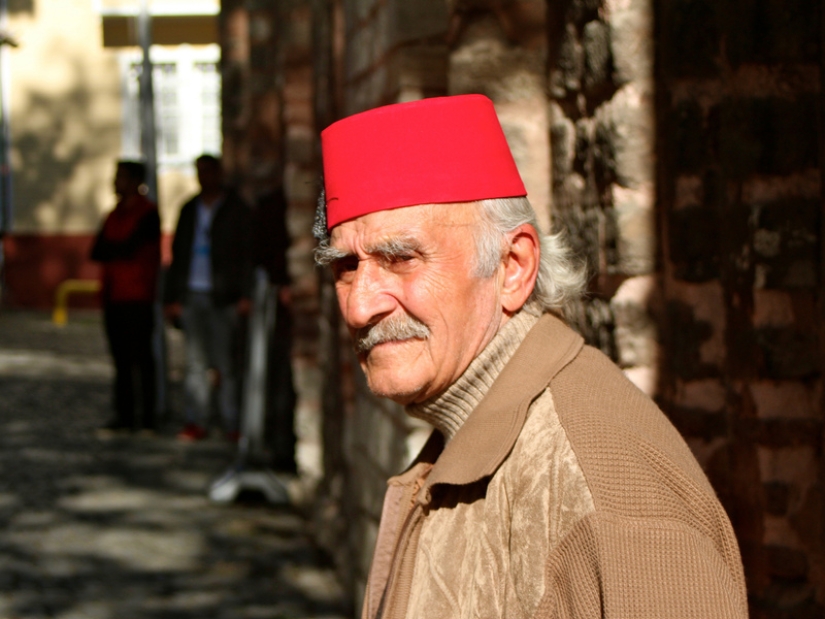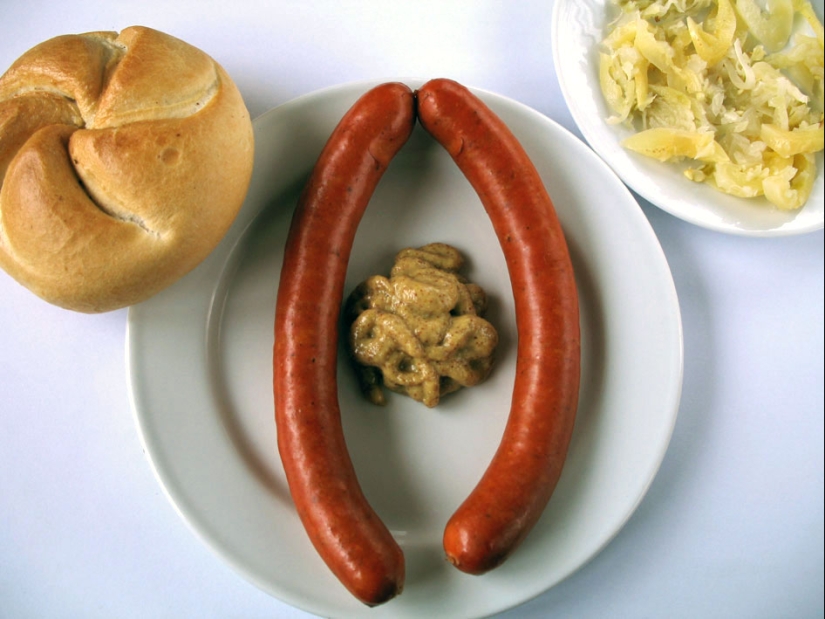Pizza, matryoshka and 6 other famous things invented not where it is considered
Categories: Culture | History | Nations | Society
By Pictolic https://pictolic.com/article/pizza-matryoshka-and-6-other-famous-things-invented-not-where-it-is-considered.htmlQuite often it happens that if people use something for a long time, they begin to consider it part of their culture. For example, the Italians "appropriated" pizza, and the Russians — a matryoshka doll. However, these things have a completely different origin, and now you will find out about it.
We will also tell you about what other 6 known phenomena and things were invented not where it is commonly believed.

Ask any person: "Where did they come up with pizza?", and he, without the slightest hesitation, will answer: "In Italy!". And this answer, as you have already understood, will be incorrect, because Greece is the birthplace of this "Italian" dish. It was the Greeks who "brought" pizza (then it was also called "plakuntos") to Ancient Rome. It was a flat loaf, on which various fillings were laid out, and then baked.

By the way, the Greeks borrowed the very idea of making flat bread (without filling) from the Egyptians. And over time, this dish has evolved to the familiar "Italian" pizza.
There are things that are very clearly associated with a particular country. In the case of France, these are the Eiffel Tower, Champs—Elysees, wine, berets and, of course, croissants. And now, we ask you to move away from the screens of particularly sensitive readers, because now we will say that this romantic "French" dish was actually invented ... in Austria. Yes, yes, back in the 13th century. And they were then called "kipferl", which meant "crescent".

The French name "croissant" is, in fact, a literal translation from Austrian, since in 1839 the Austrian August Tsang opened a bakery in Paris with Hungarian desserts and, for the convenience of customers, adapted all the names. For a long time croissants were sold only here, in this bakery, and the rest of the French did not even know about them. Now a croissant with coffee is a traditional French breakfast.
"Did they really cheat with the numbers?", you ask. Well, you could say that. The Arabic numerals that we use in everyday life are really imported from Arab countries. The only problem is that the Arabs themselves also borrowed them. And the real homeland of the familiar numbers is India.

In India, this method of conducting calculations appeared no later than the V century. But the Europeans began to use it only in the X century.
Fez is a headdress known in the eastern states, which is a woolen cap, most often red in color with a black tassel on the top. Since 1826, the fez (also "fez") has been used as a uniform headdress by Ottoman officials and soldiers. The same "cap" often features sultans in portraits, and she also found herself in the center of a scandal during the "hat revolution". In the 1920s, the ruler of Turkey, Ataturk, banned fezzes and turbans, replacing them with European hats.

In a word, just as the croissant is associated with France, so the fez, one way or another, is associated with Turkey. However, the birthplace of this headdress is Greece. The Turks only found out about it after they conquered Byzantium.
And now patriots and lovers of all Russian can get hurt. It turns out that our traditional Russian matryoshka takes its roots from… Japan! It was the Japanese who first came up with a doll with dolls inside. They called it fukuruma. The name comes from the name of one of the seven Japanese gods of happiness, Fukurokuju. Inside the figurine with the image of the old man fukuruma, his whole family was "hiding".

It is believed that once this funny Japanese toy was seen by the Russian artist Sergey Malyutin. And it was she who served as the prototype of the matryoshka known to us — a painted wooden doll in traditional outfits with smaller dolls inside.
Swedish meatballs are the most popular dish in the IKEA dining room, for which, according to the network, every third visitor comes to the store. It is not surprising that this dish was considered to be "Swedish", although its homeland is actually far beyond the borders of the country.

Delicious meat balls were "brought" to Sweden from the Ottoman Empire by King Charles XII. Then they still bore the proud Turkish name "kufta". However, over time, the recipe for meatballs has changed a little — they began to add an egg to them, and minced lamb, if desired, is replaced with pork. For the Turks, this is unthinkable.
Debrecen sausages are a traditional Hungarian dish, which consists of pork or beef sausages in a natural shell of sheep's intestines. They are used to prepare many dishes of Hungarian cuisine, for example, Debrecen goulash. These sausages are very widespread not only in Austria, but also in the south of Germany and the former territories of the Austro-Hungarian Empire.

However, despite such a close connection with Hungarian culture, the Czechs were the first to come up with this dish. Now these sausages are present in the kitchens of many other countries. For example, in Poland it is "debrecin sausage", and in Bulgaria it is "debarcini".
Tetris is an incredibly popular video game familiar to all children of the 90s. This is a simple but fascinating puzzle with "falling" geometric figures that need to fill a horizontal row. Subsequently, it disappears and all the rows above it are lowered by one cell. The goal of the game is to score as many points as possible until the field is completely filled.

Usually such games are made by the Chinese or Japanese, but Tetris, to great surprise, was created by Russian Alexey Pajitnov. The Soviet programmer invented Tetris in 1984, when he worked in Computer Center of the Academy of Sciences. The game quickly became popular and began to spread around the world. It is not surprising that dozens of different companies began to fight for the rights to use and sell it, but this is a completely different story…
Recent articles

Pastry chef Elena Gnut creates real works of art from flour and butter. Almost 300 thousand subscribers have been following her ...

Ready to be surprised? This collection is guaranteed to delight fans of all sorts of curiosities. Yes, the longer we live, the ...

Sunken or simply abandoned ships have a mystical magnetism. They attract not only experienced extreme sports enthusiasts, but also ...